Art and AI: What do we truly need from technology?
Art is the soul’s expression, intertwining emotion, imagination, and culture—essential to humanity's journey.
- Nirasha Kannangara -
4/8/20248 min read


In this article, the term "art" specifically pertains to visual arts, including disciplines such as drawing and painting, as well as related fields such as illustration.


"Every artist dips his brush in his own soul and paints his own nature into his pictures."
– Henry Ward Beecher
Art, at its core, is a way for individuals to express their emotions, imagination, and unique perspectives. It’s deeply intertwined with its creator, and its value isn’t just in the final product but also the journey of creation.
Take Frida Kahlo, for example. Her work is a vivid portrayal of her personal suffering, even though her techniques weren’t conventionally “technical.” Or consider Beatrix Potter, whose love for nature shines through her beloved children’s illustrations, resonating even with today’s audience.
What is art?
Why is art important for humanity?

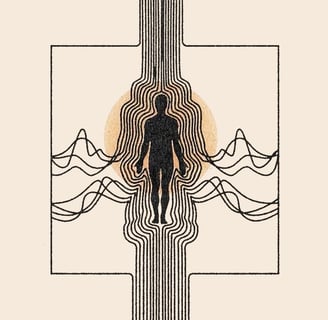
Ultimately, what do we seek in life? Many might say money, but isn't the ultimate goal comfort, happiness, peace, relief, and a sense of meaning? Art touches on all of these aspects. While it may not bring physical comfort directly, it connects us to our humanity in profound ways. It’s not just the finished piece but the creative process that’s transformative.
This is why art therapy exists—to help with stress, trauma, and emotional healing. It’s a tool that can lead to self-discovery and rehabilitation, revealing art’s deep importance in making us better humans.
Two perspectives on art
People often fall into two categories when it comes to experiencing art. The first group consists of those who have a natural talent for creating or appreciating art, even without formal education. The second group views art merely as a commodity and has not yet experienced its true essence. I don’t see this as a fault of the second category; it is simply a matter of how they are born.
For the first group, art is the journey itself—it doesn’t matter if the final piece is perfect. For those who’ve tried their hand at creating, there’s nothing quite like the pride of finishing something with your own hands. To build a better world, I believe the art industry must thrive, providing space for creativity and expression.This is why art therapy exists—to help with stress, trauma, and emotional healing. It’s a tool that can lead to self-discovery and rehabilitation, revealing art’s deep importance in making us better humans.


Human art creation vs. AI Prompting
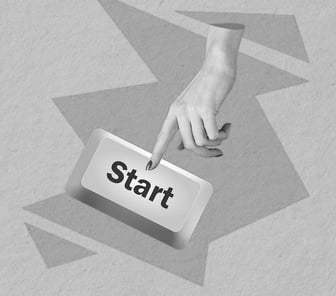

A common argument is that AI behaves similarly to artists who draw inspiration from sources like Pinterest. It's true that all artists find inspiration in the world around them—be it nature, culture, or even existing artworks. Although the title could be misleading, the book 'Steal Like an Artist' by Austin Kleon dives deeply into this idea, demonstrating how existing creations can enrich our own ideas.
When artists deconstruct and analyze an artwork, they uncover techniques, methods, and creative insights that help refine their skills and elevate their craft.
This process of learning and reimagining is what sets human creativity apart. Artists add their personal essence to the inspiration they draw, imbuing their work with individuality and emotion. AI, however, doesn't engage in this creative journey in the same way and what the prompter does not receive is huge.
My personal journey
Although I'm not a professional artist and haven't studied art in detail, it has played a significant role in my life since childhood. Painting and drawing are some of my fondest early memories. However, there were long periods during my journey when I lost touch with creating art, and despite my efforts, I found it difficult to reconnect. It felt as if I had lost a part of myself.
It took me years to rebuild my trust in the creative process and find my way back to making art. This journey became a path of self-discovery. Today, I create small pieces of art and plan to continue doing so, regardless of whether people buy them.
The Future of Art and Humanity
As a professional graphic designer, I don’t oppose AI. In fact, many tools can greatly assist during research or early creative phases. AI can complement the art-making process, but it must never replace the human spirit of creation. Right now, the art industry is grappling with instability. Artists who’ve honed their craft over decades are being undermined by systems that replicate their work without consent. We need safeguards—artists should have the right to opt out of having their work used for AI training or be compensated fairly for its use.
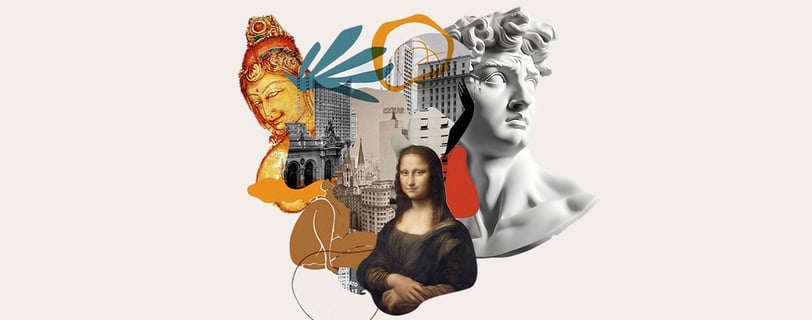

Also, throughout generations, art has been deeply enriched by the cultures, experiences, and events shaping our world. It’s a reflection of human emotions, struggles, joys, and the essence of life itself. This cultural connection is what drives humans to create art.
The bigger question
Ultimately, it’s not about whether AI can create art but whether it should.
It’s vital to consider these consequences and strive for a balance where technology complements, rather than replaces, human creativity.
"Art enables us to find ourselves and lose ourselves at the same time." – Thomas Merton
Image credit: Freepik
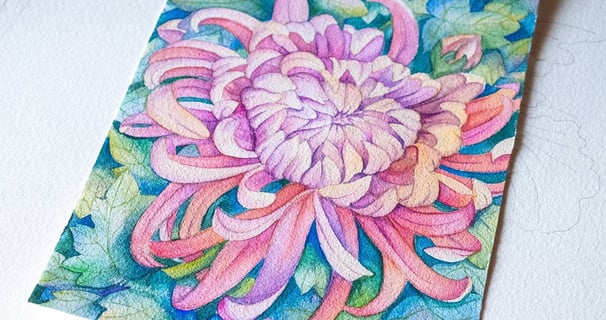

'The Chrysanthemum': Watercolour on paper by Nirasha Kannangara
Image credit: Freepik


What is art?
Art, at its core, is a way for individuals to express their emotions, imagination, and unique perspectives. It’s deeply intertwined with its creator, and its value isn’t just in the final product but also the journey of creation.
Take Frida Kahlo, for example. Her work is a vivid portrayal of her personal suffering, even though her techniques weren’t conventionally “technical.” Or consider Beatrix Potter, whose love for nature shines through her beloved children’s illustrations, resonating even with today’s audience.
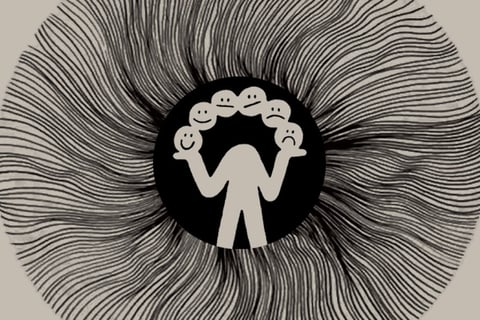

Why is art important for humanity?




"Every artist dips his brush in his own soul and paints his own nature into his pictures."
– Henry Ward Beecher
Ultimately, what do we seek in life? Many might say money, but isn't the ultimate goal comfort, happiness, peace, relief, and a sense of meaning? Art touches on all of these aspects. While it may not bring physical comfort directly, it connects us to our humanity in profound ways. It’s not just the finished piece but the creative process that’s transformative.
This is why art therapy exists—to help with stress, trauma, and emotional healing. It’s a tool that can lead to self-discovery and rehabilitation, revealing art’s deep importance in making us better humans.
Two perspectives on art
People often fall into two categories when it comes to experiencing art. The first group consists of those who have a natural talent for creating or appreciating art, even without formal education. The second group views art merely as a commodity and has not yet experienced its true essence. I don’t see this as a fault of the second category; it is simply a matter of how they are born.
For the first group, art is the journey itself—it doesn’t matter if the final piece is perfect. For those who’ve tried their hand at creating, there’s nothing quite like the pride of finishing something with your own hands. I believe the art industry must thrive to build a better world, providing space for creativity and expression. This is why art therapy exists—to help with stress, trauma, and emotional healing. It’s a tool that can lead to self-discovery and rehabilitation, revealing art’s deep importance in making us better humans.


A common argument is that AI behaves similarly to artists who draw inspiration from sources like Pinterest. It's true that all artists find inspiration in the world around them—be it nature, culture, or even existing artworks. Although the title could be misleading, the book 'Steal Like an Artist' by Austin Kleon dives deeply into this idea, demonstrating how existing creations can enrich our own ideas.
When artists deconstruct and analyze an artwork, they uncover techniques, methods, and creative insights that help refine their skills and elevate their craft.
This process of learning and reimagining is what sets human creativity apart. Artists add their personal essence to the inspiration they draw, imbuing their work with individuality and emotion. AI, however, doesn't engage in this creative journey in the same way and what the prompter does not receive is huge.


Human art creation vs. AI Prompting
My personal journey
'The Chrysanthemum': Watercolour on paper by Nirasha Kannangara
The Future of Art and Humanity


As a professional graphic designer, I don’t oppose AI. In fact, many tools can greatly assist during research or early creative phases. AI can complement the art-making process, but it must never replace the human spirit of creation. Right now, the art industry is grappling with instability. Artists who’ve honed their craft over decades are being undermined by systems that replicate their work without consent. We need safeguards—artists should have the right to opt out of having their work used for AI training or be compensated fairly for its use.
Although I'm not a professional artist and haven't studied art in detail, it has played a significant role in my life since childhood. Painting and drawing are some of my fondest early memories. However, there were long periods during my journey when I lost touch with creating art, and despite my efforts, I found it difficult to reconnect. It felt as if I had lost a part of myself.
It took me years to rebuild my trust in the creative process and find my way back to making art. This journey became a path of self-discovery. Today, I create small pieces of art and plan to continue doing so, regardless of whether people buy them.
The bigger question
Ultimately, it’s not about whether AI can create art but whether it should.
It’s vital to consider these consequences and strive for a balance where technology complements, rather than replaces, human creativity.
Also, throughout generations, art has been deeply enriched by the cultures, experiences, and events shaping our world. It’s a reflection of human emotions, struggles, joys, and the essence of life itself. This cultural connection is what drives humans to create art.
But what happens if we begin to rely solely on AI for artistic expression? A future where humans stop creating their own art would lack the cultural richness and personal connections that have defined human creativity.
"Art enables us to find ourselves and lose ourselves at the same time." – Thomas Merton
In this article, the term "art" specifically pertains to visual arts, including disciplines such as drawing and painting, as well as related fields such as illustration.
